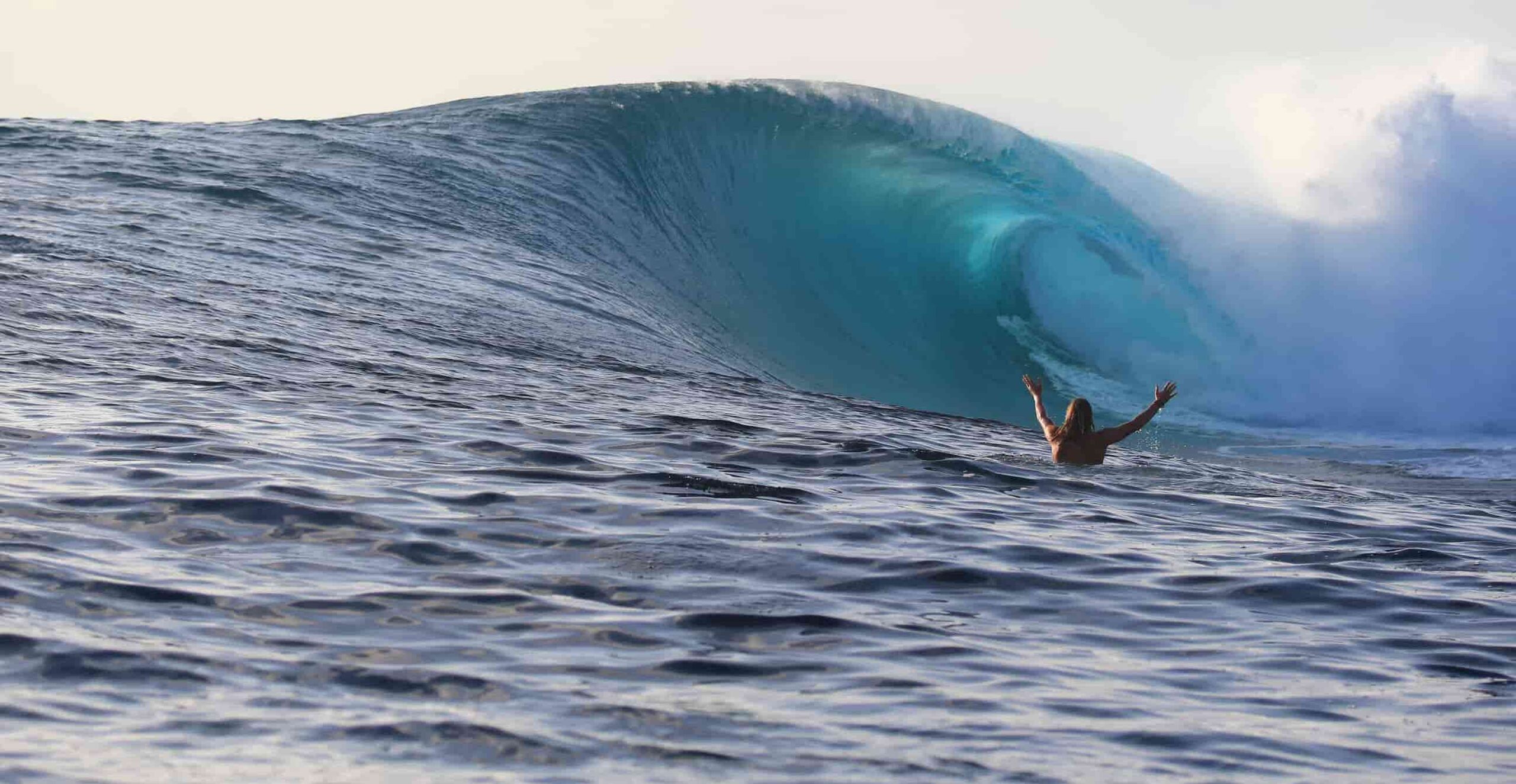Joint movement discrepancies found in surfers
When we get better at surfing, we get worse at general human movement. Certain joints get ‘loose’ and certain joints get ‘stiff’. In very advanced surfers, I see a hyper-mobile lower back (from lots of torso rotation), limited shoulder flexion coupled with shoulder external rotation and stiffness through the hips – particularly external and internal hip rotation. To prevent injury in surfing we need to improve the load bearing capacity of our body’s tissues to a level beyond which they will be exposed to, maintaining the health of all our joints to optimise general movement and surf performance.
The most prevalent high-injury areas in surfing include the shoulders, lower back, knees, ankles and neck. The best way to prevent chronic injuries to these areas is by increasing your active, usable mobility, which includes owning strength within a wide range of joint motion. Key areas to work on:
Overhead shoulder mobility – full range shoulder flexion. Pecs, lats, shoulder internal rotators and shoulder posterior capsule all need some love to help increase your overhead shoulder mobility.
Anterior pelvic tilt and sway lower back postures are common. Hip flexors tend to get super short and hip rotation (internal and external rotation) are common focus areas.
Neck extensors overuse and deep neck flexors underuse, compounding an existing “desk-neck” posture and leading us to mimic our turtle friends.
The lower spine can become too mobile from years of rotating through the lower spine and hips to move the board. This is essential to good surfing but we can take some quality control methods to keep the spine strong and the upper spine, shoulders and hips more mobile.
Why your body will thank you
You can’t build stability, endurance, strength or power in joint ranges that you don’t have. Developing the optimal joint range of motion (mobility) therefore takes priority over stability, endurance, strength and power in an inadequate range of motion.
First, check whether every joint is working as it should. Find a good FRC or Kinstretch provider and get yourself assessed. Having an 10-15 minute effective mobility routine can fit into your day as a warm-up before a surf, before a workout, in the morning before you start your day, during the middle or end of your day. Whatever works, just get it done. Allocating at least 1 full hour for mobility work per week in addition to your daily routine is ideal to keep your practice honest and effective. A coach can help you spend more time in the ranges that you won’t naturally go to yourself.
In summary
Regular movement feeds nutrition to your joints which are not regularly used in surfing, which helps to maintain joint health and integrity. The greater positions and joint angles your body can move and control, the greater your capacity to adapt to surfing situations without snapping, straining, tearing, popping or cracking something. Losing joint range of motion can significantly impact the body’s ability to react to surfing’s challenges acutely or chronically over time. Move better to surf better and enjoy staying in the water for years to come.
To check out the most comprehensive online training for surfers you can find, head to surfstrengthconditioning.com.
